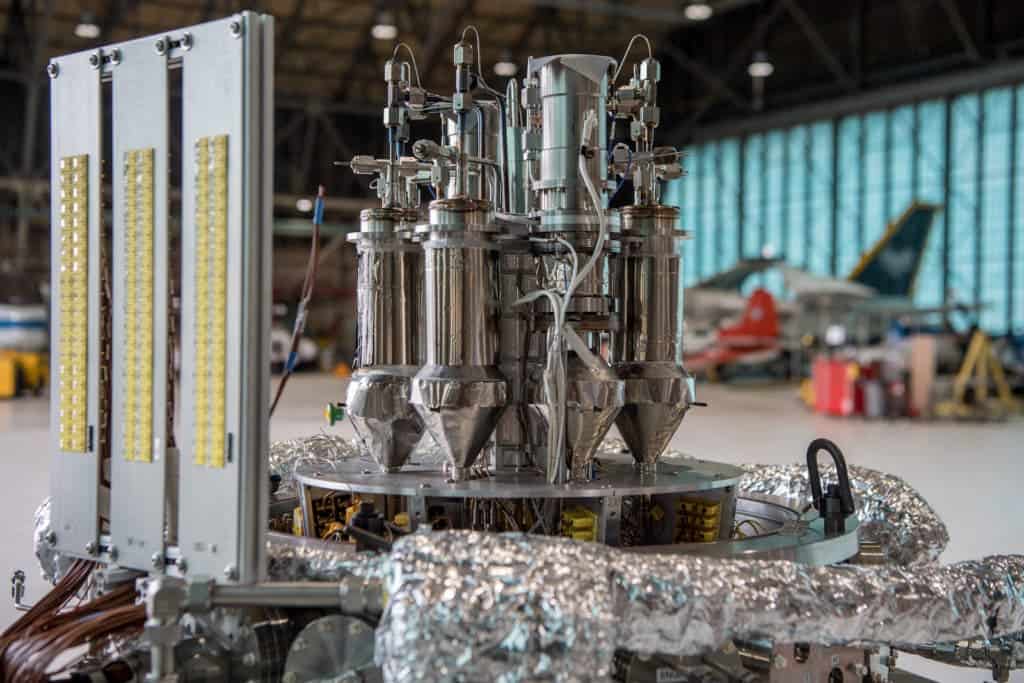NASA successfully tested small nuclear reactors the size of an average backpack, which is thought to be an ideal size for off-world missions such as in deep space or on Mars.

Credit: NASA.
It’s a miracle we exist when you take a step back to consider that we’re all basically hitching a ride on a huge rock through the infinite space. We’re orbiting the Sun at just the right distance where water can stay liquid and nourish life. Between us and the crippling threats of space lies a thin cushion of atmosphere and an invisible blanket called the magnetosphere.
At the same time, despite all the chaos and rumble of interplanetary space, life on Earth is very predictable. Thanks to hundreds of millions of years of evolution, organisms have become perfectly adapted to the environment. We breathe the air in the atmosphere, receive nourishment from the food that grows in the soil, and so on. Everything is so ‘natural’ — but once you leave Earth, simply staying alive is a challenge. You need to carry air with you, utilize all sorts of complex machinery to maintain livable temperatures. All these things can be quite cumbersome; taken together, they’re a monumental challenge. In addition, if there’s one thing that’s indispensable in keeping us alive, it’s a power source. Without a source of reliable energy for life support, thrusters, and all the other critical electronics, humans outside Earth are toast.
That’s why NASA’s recent efforts to deploy nuclear fission reactors for out-of-Earth missions is so exciting. While the idea isn’t exactly new (U.S.’s first and only space nuclear reactor, SNAP-10A, was launched in the 1960s), there hasn’t been serious talk of a new nuclear reactor in space for decades.
SNAP-10A contained enough uranium fuel to produce up to 600 watts of power for a year. The reactor shut down after only 43 days into the mission, however, it is still orbiting our fair planet and will continue to do so for another 3,000 years, NASA estimates. The new, so-called Kilopower reactor developed by NASA is significantly more powerful. It comes in two version: a 1 KW reactor and a 10 KW reactor.
To be fair, that’s not a lot of power at all: tnhe average American home uses about 5 KW each day. A toaster uses about 1 KW. Luckily, space-bound electronics are designed to be super efficient. The Curiosity rover, for instance, only needs 120 W of electricity to operate, and we’re talking about a 2,000 pound (900 kg) science experiment on wheels.
Curiosity also operates on nuclear power. However, the Martian rover operates on a nuclear battery, rather than a nuclear reactor. It simply converts heat from naturally decaying plutonium into electricity, whereas a nuclear reactor splits uranium atoms to release energy that is then converted into electricity. The Kilopower is one of the latter, and it’s no bigger than a wastebasket.
Even for this size, 1 KW or even 10 KW of power seem mighty little for a nuclear reactor. The conventional variety can supply power in the gigawatt range, for instance. But while such power generators are cooled by tonnes of flowing water, there is no such cooling agent availabe in space.
The Kilopower has very few moving parts and its design sends heat to a Stirling engine where pressurized gas drives a piston coupled to a motor that generates electricity. Heat is transferred to the Stirling engine through eight heat pipes, each filled with sodium, which has a high boiling point. Heat from the fission reaction boils the sodium at the end of the pipe closest to the uranium fuel, which travels in vapor form down the pipe and condenses. It’s the temperature difference that drives the Stirling and ultimately generates electricity. The cooled substance then travels back to the warm part of the pipe. Reliable power can be produced for years, perhaps even decades.
The prototype power system was designed and developed by NASA’s Glenn Research Center in collaboration with NASA’s Marshall Space Flight Center and the Los Alamos National Laboratory, while the reactor core was provided by the Y12 National Security Complex.
“It would have a tremendous impact enabling missions that otherwise aren’t attainable,” Lee Mason, a NASA energy specialist, said during a press conference. “It would enable us to mine the resources on Mars.”
“We want a power source that can handle extreme environments,” says Mason in a statement. “Kilopower opens up the full surface of Mars, including the northern latitudes where water may reside. On the Moon, Kilopower could be deployed to help search for resources in permanently shadowed craters.”
The plan is to have one such reactor powering deep space missions, such as those on an asteroid or to some of Saturn’s moons. The 10 KW version is destined for heavy duty operations, such as a Martian colony. NASA envisions sending five 10 KW reactors (50 KW of power) to a landing site where robots and automatic systems are deployed. By the time humans arrive at the site with a separate spacecraft, they ought to have a habitat that is already operational and powered by electricity. On Mars, where there is considerably less sunlight than on Earth, solar panels aren’t that effective which is why nuclear power is so appealing.
Testing of the Kilopower system in the Nevada desert has gone smoothly so far and in March, the team plans to conduct a full-power test.










